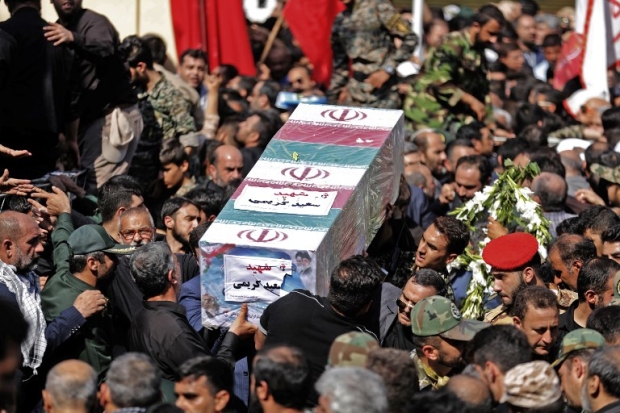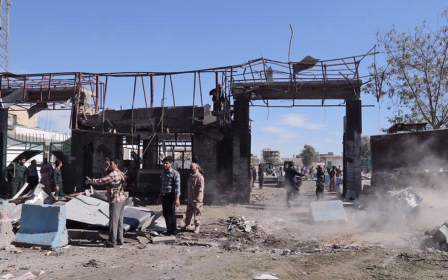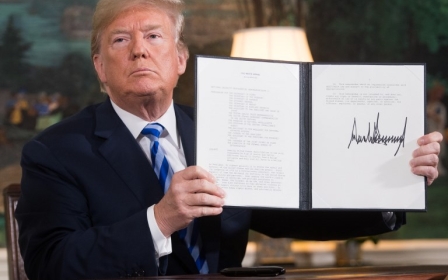Is Iran about to lose its status as the region's 'most secure country'?

The terror attack in the Iranian port city of Chabahar on 6 December, which killed two police officers, unfolded against a backdrop of mounting insecurity in the country.
The attack occurred on the heels of a major attack in Ahvaz in September, which killed 25 people, and a spate of other incidents, notably the assassination of a Sunni Muslim cleric in the northern Golestan province last month.
On Monday, responding to the deteriorating security situation, the Iranian intelligence minister, Mahmoud Alavi, warned parliamentarians of a “shift” in the security climate, echoing widespread fears that the Islamic Republic may be on the threshold of losing its status as the region’s most secure country.
Counter-terrorism success
Prior to the June 2017 terror attacks against the Iranian parliament and the mausoleum of the late Ayatollah Khomeini, the Iranian capital had been spared a major attack for decades. This remarkable counter-terrorism success reflects two realities: the country’s relative political stability and the professionalism of its security forces.
The latest attacks have dented that image of security and stability, and coupled with a deteriorating geopolitical climate, have raised the prospect of intensifying insecurity, in part sponsored by regional rivals.
The latest attacks have dented that image of security and stability, and coupled with a deteriorating geopolitical climate, have raised the prospect of intensifying insecurity, in part sponsored by regional rivals
It is within this context that Iranian Foreign Minister Mohammad Javad Zarif has implied a possible connection to a 'foreign power' for the Chabahar attack on account of the interception of "extremists" back in 2010.
The attack on the police headquarters in Chabahar appears to have been a sophisticated operation involving a suicide bomber attempting to drive his vehicle inside the police compound, in addition to multiple attackers trying to storm the building on foot. This attack style - all too familiar in Middle Eastern conflict zones, from Syria to Yemen - is extremely rare in Iran, which of course serves to compound its impact on public opinion and decision-makers.
Turning point
The attack was initially claimed by a little-known militant group called Ansar al-Furqan. Rooted in the restive southeastern province of Sistan and Baluchistan, Ansar al-Furqan’s genealogy can be traced back to Jundallah, whose foundation in 2002 marked a turning point in Baluch-based militancy in Iran.
Jundallah fell apart once Iran destroyed its leadership in 2010, but splinter groups continually emerge to carry on the fight, primarily via cross-border attacks on the Iran-Pakistan frontier. Among these splinter groups, Ansar al-Furqan stands out for its ambition to operate at a national level, as opposed to solely carrying out operations in the Sistan and Baluchistan area.
In late 2017, the group claimed to have attacked an oil pipeline in the southwestern Khuzestan province. Although Sunni militant groups also operate in Khuzestan, they are nonetheless distinctly different, both in terms of ethnic profile and ideology, from Iranian Baluch militant groups.
Traditionally, militant jihadi groups in Sistan and Baluchistan have kept their distance from al-Qaeda, at least operationally and politically, if not ideologically. Any al-Qaeda involvement, albeit in a purely rhetorical role, is significant in the context of the global jihadi group’s tense accommodation with elements of the Iranian security establishment.
The relationship between Iran and al-Qaeda was once described by former US intelligence chief James Clapper as a “shotgun marriage”, implying that the inevitable divorce would be messy and potentially bloody.
How will Iran respond?
Iran has traditionally cracked down swiftly and decisively on actual and potential terror threats. In the 1980s, a plethora of left-wing militant groups were obliterated through aggressive counterterrorism operations and harsh judicial instruments.
Today’s terror threat is concentrated on ethnic-based groups with transnational links. Baluchi militants and Kurdish separatists are prime examples, a threat compounded by links to religious extremism and, in some cases, regional jihadi groups.
The conflation of ethnic, religious and regional narratives can sometimes produce a confused operational picture. This came into sharp relief with the terrorist attack on the military parade in Ahvaz in September. Initially, an ethnic-based group styling itself as the Arab Struggle Movement for the Liberation of Ahvaz (ASMLA) took responsibility, before distancing itself from the attack.
Iranian authorities appeared to have taken ASMLA’s initial claim of responsibility at face value, before turning their sights on the Islamic State (IS) group, which also claimed responsibility. Indeed, Iran’s official response came in the form of ballistic missiles launched against IS targets in eastern Syria; the proximity of these targets to US military forces stationed in Abu Kamal was widely perceived as a warning to the Americans.
Later, in October, the Islamic Revolutionary Guards Corps (IRGC) claimed that an IS “mastermind” of the Ahvaz terror attack had been killed in Iraq’s eastern Diyala province by IRGC-aligned local forces. But an alleged Iranian plot to “assassinate” an exiled ASMLA leader in Denmark indicates that Iranian intelligence services are cognisant of a complex operational picture, in which ethnic-based militant groups work with transnational networks towards common goals.
Blaming foreign powers
Ballistic missile strikes have emerged as the IRGC’s primary response to terror threats. Earlier in September, the IRGC attacked the headquarters of the Kurdistan Democratic Party of Iran (KDPI) in northern Iraq with seven missiles. More than a dozen people were killed, including commanders and senior officials of the KDPI.
The strike was widely believed to have been a response to the KDPI’s decision to resume the “armed struggle” back in early 2016, and specifically retaliation for a cross-border attack this past July that killed 10 IRGC servicemen.
Even if Iranian officials have evidence that establishes a direct link between terror incidents and foreign powers, they are unlikely to take direct action against these states - at least not for the foreseeable future
It is common practice for Iranian leaders and officials to blame foreign powers for terrorist incidents. Zarif’s allusion to a UAE connection in previous incidents - and by extension potentially to the latest terror attack in Chabahar - reflects a deeply held belief that state actors play a role in the domestic terror threat.
Similar accusations were made in the aftermath of the Ahvaz terror attack, with Iranian leaders and officials pointing the finger of blame at the US and Saudi Arabia.
But the blame game is more about containing the threat and preventing escalation, as opposed to clear-cut attribution. Iranian leaders are hoping that tough talking will deter their regional rivals and enemies from staying true to their word by taking the war "inside" Iran.
Going forward
The intensifying domestic terrorist threat is unfolding against a backdrop of mounting economic hardship brought about largely by the US decision to reimpose full sanctions on Iran after withdrawing from the landmark 2015 nuclear accord.
It is this combination of mounting security threats and economic crisis which introduces a significant level of unpredictability about Iran’s response to security threats in the near future. Firing ballistic missiles against regional terror targets – and by extension intimidating regional rivals as well as the US – is likely to remain Iran’s primary response to major terrorist incidents.
There is also growing evidence that elements of the Iranian intelligence services are reverting to the old tactic of assassinating their most deadly enemies on European soil. This tactic risks causing a diplomatic crisis, as demonstrated by the response of the French and Danish governments to alleged plots to attack targets on their soil.
It seems that Iran is prepared to raise the stakes to both contain security threats at home and to maintain its reputation as the safest country in the Middle East.
- Mahan Abedin is an analyst of Iranian politics. He is the director of the research group Dysart Consulting.
The views expressed in this article belong to the author and do not necessarily reflect the editorial policy of Middle East Eye.
Photo: Iranian revolutionary commander in chief, Mohammad Pakpour, inpects the scene of a car bombing in front of a police station in the city of Chabahar, on 6 December 2018 in southern Iran (AFP)
New MEE newsletter: Jerusalem Dispatch
Sign up to get the latest insights and analysis on Israel-Palestine, alongside Turkey Unpacked and other MEE newsletters
Middle East Eye delivers independent and unrivalled coverage and analysis of the Middle East, North Africa and beyond. To learn more about republishing this content and the associated fees, please fill out this form. More about MEE can be found here.






